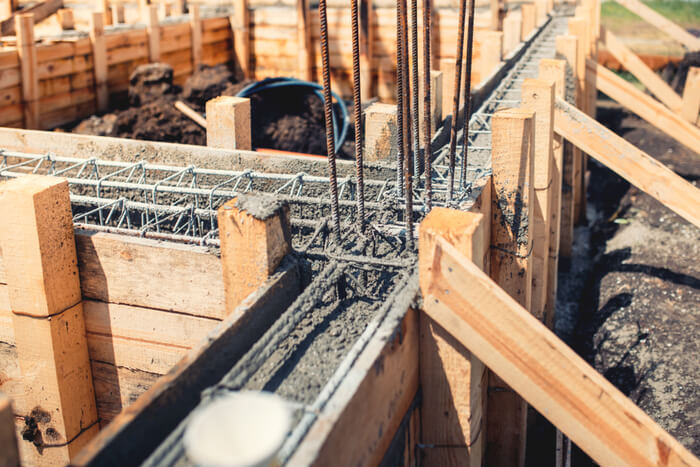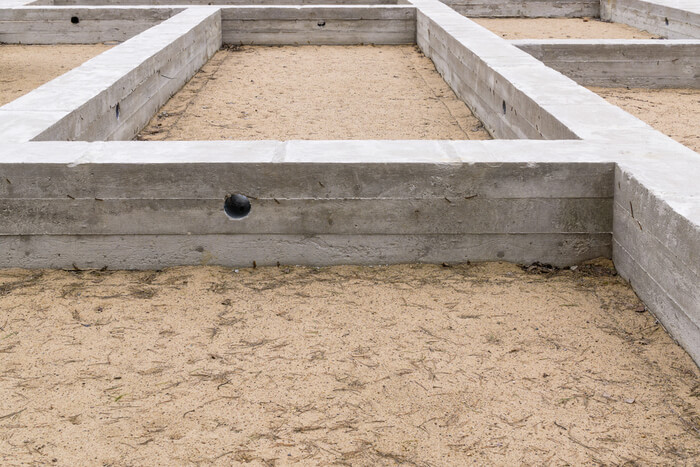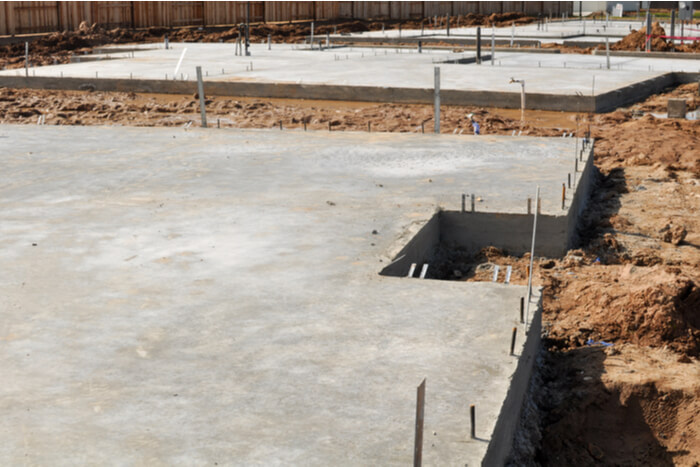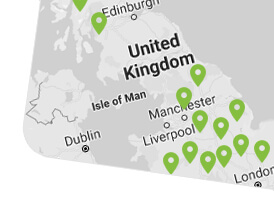When building a log home, the foundation is one of the most important features to consider. This is a section of the house that you have to get right first time, because once the walls and roof are erected on the foundation, there is no way you can make changes. Faults in the walls and roof can be changed at any time, but the foundation ‒ this is simply impossible. So, when building a log house it is very important that you know about the various types of foundations and choose one that best suits your needs and requirements and helps you live happily and comfortably in your house for years, centuries and generations to come.

Remember that the choice of foundation also depends on the properties of ground level and soil type on the building site, as well as the size and weight of the log house. As a result, the best option for one log house is not essentially the best for another. Though, one thing that remains common to all options is that your foundation must be done correctly. Any issues in this matter, after your house has been built can lead to extremely expensive remedies to rectify it. Not everybody knows that there are various different types of log house foundations to choose from. Here we will be discussing a few very popular types of foundations.
Basement Foundation: This type of foundation is great for installing certain machines (a well pump, HVAC etc.), but without a doubt it is one of the most expensive options. A basement is like a slab foundation, combined with an extended crawl space foundation. Generally, it is said that a basement is the most reasonable space to make when building a house. But remember that there is a lot more to building a basement than just building some concrete walls. If you plan to use the area as a living space then you need to waterproof that area. Also, the unending heating and cooling cost would probably never be remodeled anyway. In short, this type of foundation is not a very good choice for a log house.
Perimeter Foundation: This type of log house foundation is extremely popular in the UK. Basically, this it has external wall which has a step down to the inside which allows for floor beams to be located here. Depending on the size of your floor joists and the width of your log cabin, you need an internal support wall or walls to hold the joists at particular intervals. This type of foundation is open solum type, which implies the air can circulate under the floor. In order to achieve this, air bricks are fitted into the external walls just below the joist level. This also prevents the buildup of moisture, which proves really helpful for your log house. The growth of any vegetation underneath the building can also be prevented by covering it with a thick polythene sheet with deep pea gravel.
Strip Foundations: This type of foundation is basically a concrete foundation, which is generally built quite deep to combat any soil heave or frost issues. On top of this block or brick walls are built to the desired height above ground level. It is a comparatively simple method, but you have to go really deep.

Raft foundations: Totally unlike strip foundations in this type of foundation you don’t have to go so deep, as it is made with one piece of concrete and as a result it is stronger. It is most preferred in areas where tree roots are a problem. As this type of foundation is really strong, you don’t have to worry about tree roots and the concrete resists the root trying to get under it. Less block and bricks are required but it does need a lot of concrete.
Crawl space: This type of foundation is best suited for soil types where laying a full basement foundation is not possible. This also gives space for plumbing, duct work, wiring and other utilities. It is usually just 3-4 feet in height and can be constructed of masonry blocks or poured concrete.
Slab: Usually, a slab foundation is poured concrete foundation that is laid upon frost walls or deeper pilings to keep the foundation from shifting or cracking due to a change in temperature. The usual slab foundation includes a perimeter footing and a concrete stem wall. Over the top of the footings and stem wall a 4” slab of concrete is placed.
Concrete pad foundations: This is a really popular and simple method of foundation, which is widely used for log houses. It uses more concrete than the strip foundation, but is not as deep. In certain cases, reinforcement may be needed.
Piers: Basically these are structures that come out of the ground to give the building support at a particular point. Mostly they are built at strategic load bearing locations, which, when combined together, support the complete structure. Generally, they are made using blocks or bricks.
Concrete slab foundation: A concrete slab foundation makes a great choice for a log house. You don’t have to worry about rot or termites, and water is also not an issue with properly installed drainage. A slab is quite durable, which is a great thing. Building a log house on a concrete slab will also give you a little more peace of mind about the weight of the log house. It is also easy to maintain.

Screw foundation: This is a type of the pier foundation. Long metal rods with a screw thread on the end are used. These rods are screwed into the ground by a machine. The house rests directly on the ends of the foundation rods. It is quick, environmentally sound and it may ease planning permission.
So, go ahead and choose the best type of foundation for your log house to ensure the durability of your house. Or you can get in contact with a manufacturer to help you choose the best type of foundation as per the size, style and weight of your log house.












